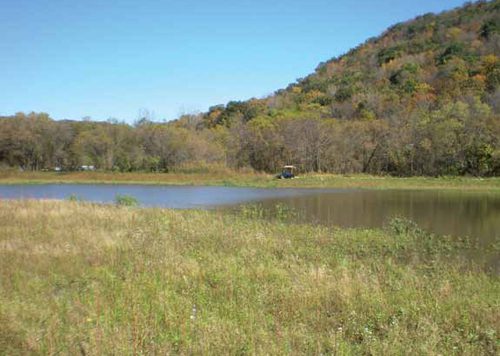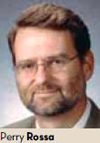
|
factsfigures Project: Taxiway Extension Location: La Crosse (WI) Municipal Airport Total Cost: $13.87 million Funding: AIP (95%), state (2.5%), local (2.5%) Duration: 10 years Environmental & Construction Engineering/Consultation: Mead & Hunt Recognition: 2010 Outstanding Achievement Award, Industrial Fabrics Assoc. Int’l Of Note: Extensive mitigation projects had to be completed before extension could begin; site prep included dredging and filling 8+ acres of lake and surrounding wetlands. Wetland Mitigation Prime Contractor: Strupp Trucking Seeding & Planting: Cedarburg Science, LLC Fishery Mitigation Prime Contractor: A-1 Excavating Fencing: Century Fence Co. Dewatering: DeWind Dewatering Electrical: Kish & Sons Electric Asphalt: Mathy Construction Co. Taxiway F Dredge & Fill Prime Contractor: Integrity Grading & Excavating Dredging: Walter & Son Waste Hauling, LLC Electrical: Poellinger Electric Fencing: Century Fence Co. Erosion Control, Seeding/Mulching: Westland Restoration Geosynthetic Products: Tensar Int’l. Corp., Propex, SKAPS Industries, Raven Industries Taxiway Construction Prime Contractor: Integrity Grading & Excavating Concrete Paving: Cornerstone Pavers, LLC Asphalt Paving: Mathy Construction Co. Pavement Markings: Crowley Construction Corp. Clearing & Trucking: Harry Viner Pavement Cutting: Hardrock Sawing & Drilling Specialist Co. Electrical: Poeliinger Electric |
That wasn’t the case at La Crosse Municipal Airport (LSE) in Wisconsin. The extension of its Taxiway F stretched over 10 years and cost $13.87 million. Before the complex project was complete, crews filled more than 8.5 acres of lake and adjoining wetlands; a system was devised to pump oxygenated water into a lagoon on an island in the middle of the Mississippi River to save fish; and the airport purchased, restored and maintained a wet meadow and waterfowl pond two counties away.
At times, airport manager Dan Wruck questioned whether he would be around to see the project completed.
Why Bother?
In 1989, LSE relocated its terminal from the east side to the west side of the airport. Approximately half of the parallel taxiway feeding the airport’s primary Runway 18-36 was constructed along the southern half of the runway on the west side of the field to provide access to the terminal apron. Because the remaining portion of the taxiway was already located along the northern half of the runway on the east side of the field, aircraft had to cross 18-36 during taxiing operations. Safety concerns prompted the FAA to suggest that the airport construct a full parallel taxiway along the west side of the field.
“We always knew that our goal was to have a continuous taxiway on the west side of the airfield,” Wruck explains. “But we started looking at the project in earnest back in 2001 when pavement surveys showed that the parallel taxiway on the east side was going to require reconstruction. We determined that we’d be further ahead if we extended Taxiway F on the west side.”
At that point, the “only problem” was a lake standing in the way.
Give & Take
LSE is bordered by the Mississippi River, Black River and Lake Onalaska. It’s also located in the middle of the longest river refuge in the contiguous United States. Lake Onalaska and its wetlands, which butt up against the airfield, are a high-quality pan fish habitat and flyway stopover for a half-million waterfowl, including a very large portion of the North American canvasback duck population.
To extend Taxiway F, part of Lake Onalaska would have to be filled. And to obtain permission to remove part of what was designated unique habitat by the Wisconsin Department of Natural Resources (DNR), the airport would have to locate, secure and design mitigation sites to remedy the impact to the wetlands, migratory waterfowl and fishery.
The airport contracted Mead & Hunt to locate possible mitigation sites as well as to design and oversee the Lake Onalaska fill and taxiway construction. Mead & Hunt project manager Lisa Kinsman describes some of the complications involved: “When you take wetlands away, you have to return them. Because these lands were designated unique habitat, we weren’t allowed to return what we took through a wetland mitigation bank. The DNR required us to locate mitigation areas within several miles of the Mississippi River because we were removing habitat from the river. They also had to be located on the Wisconsin side of the river and at least 10,000 feet away from the airport because the FAA doesn’t want to increase wildlife habitat near an airport.”
construction. Mead & Hunt project manager Lisa Kinsman describes some of the complications involved: “When you take wetlands away, you have to return them. Because these lands were designated unique habitat, we weren’t allowed to return what we took through a wetland mitigation bank. The DNR required us to locate mitigation areas within several miles of the Mississippi River because we were removing habitat from the river. They also had to be located on the Wisconsin side of the river and at least 10,000 feet away from the airport because the FAA doesn’t want to increase wildlife habitat near an airport.”
Complicating matters further, all of the U.S. Fish and Wildlife Refuge area, which covers 30,000+ acres along the Mississippi River, was off limits because federal lands could not be used to meet mitigation requirements.
Fish & Fowl
An environmental assessment was initiated in 2003. Mead & Hunt worked with the Army Corp of Engineers and the Wisconsin DNR to ensure that federal and state laws and requirements were met. The FAA signed off on the project in 2005, and the search for mitigation sites began.

The purchase and restoration of Sugar Creek, a 20-acre coulee site in the village of Ferryville, WI, ultimately fulfilled the wetlands mitigation requirement.
According to Perry Rossa, biologist for Mead & Hunt, western Wisconsin’s coulee country is marked by very steep terrain. The unregulated conversion of watershed lands to logging and eventually agriculture resulted in extensive erosion and burying of valley floors beneath up to 30 feet of soil and sediment. In southern Wisconsin, agriculture and the construction of roads and ditches have led to massive runoff at the same time groundwater infiltration has decreased. As a result, the hydrology of the lakes, rivers and streams are dominated by surface water and not groundwater. Every road ditch is, in effect, a hydrologic shortcut, Rossa emphasizes.

At the Sugar Creek mitigation site, he explains, “We excavated soil to expose the water table at a sufficient depth and saturation to favor sensitive plant species adapted to constant contact with cold groundwater. We restored a groundwater supported wet meadow and a marsh complex with habitat for waterfowl and wading birds. We also planted several thousand native plants.”
|
Turning Over the Reigns When La Crosse Municipal Airport established a 20-acre wetland mitigation site two counties away, its work wasn’t complete. As owner of the property, the airport must Rossa connected airport officials with the Mississippi Valley Conservancy (MVC), a nonprofit land trust that buys and restores outstanding natural habitats and manages them in perpetuity. MVC agreed to assume stewardship of the Sugar Creek property. And after the airport demonstrates to the DNR that the property is functioning well and will be managed properly, it plans to transfer ownership to MVC. “The airport doesn’t want to be in the business of owning and maintaining wetlands,” relates Mead & Hunt project manager Lisa Kinsman. “It’s a win-win for the airport and the state. This land trust partnership is key to making the project a success.” Rossa considers the project one of the best he has worked on in 20+ years. “The site is performing exceptionally well,” he reports. “It includes a peaceful little pond set in a valley next to a cold water trout stream. Even though you’re right there in the village of Ferryville, there’s no trace of human civilization.” |
“In the winter,” Kinsman explains, “fish moved into the lagoon to avoid the river’s currents. The lagoon would ice over, oxygen would be depleted and large fish kills would result.”
The city tried installing aerators with little success. Brainstorming the problem, Mead & Hunt’s water resources department suggested pumping oxygenated water directly from the river into the lagoon during the winter months. The system consists of a pump station and control panel operating two pumps that disperse water from the river into the lagoon through about 1,000 feet of 12-inch pipe. The pumps are run only during the winter months and can be adjusted to meet the lagoon’s oxygen level needs.
“It’s a beautiful park and it has been a great partnership working with the city’s parks department,” Kinsman says enthusiastically. “Plus, the DNR is happy that we have been able to make up for the taxiway’s fishery impact.”
The End in Sight
With the mitigation projects in place, the airport finally received the go-ahead for its Taxiway F extension.
In September 2009, prime contractor Integrity Grading and Excavating prepared a three-acre geo-tube dewatering area and a subcontractor began dredging operations. Approximately 17,000 cubic yards of silt and muck were pumped from the lake bottom into a specially constructed dewatering pad, treated with dewatering chemicals, then stored in geotextile tubes that allowed water to escape. After it tested to DNR specifications, the water was returned to Lake Onalaska. The highly rich organic materials are stored in the geo-tubes for future landscaping projects.
The fill work in Lake Onalaska and its surrounding wetlands began with crews placing a biaxial geogrid on the lake bottom. About 56,000 tons of clear breaker run were dropped into the lake water to a height of one foot above lake level, and a 72-inch water equalizer pipe was set in place. Work was then halted for the winter.
In spring 2010, work commenced with placement of geotextile fabric over the breaker run and 75,000 cubic yards of sand to form a sub-base for the taxiway extension. Riprap created a new shoreline for the lake, and fencing and landscaping finished off the lake fill portion of the project.
 Approximately 30,000 tons of crushed aggregate, 13,000 tons of asphalt and 50,000 square yards of concrete were laid to form a 13.5-inch thick concrete taxiway extension parallel to Runway 18-36. Throughout the project, the primary runway was shut down for four days in March and another 10 days in May to facilitate work on the taxiway-runway connectors.
Approximately 30,000 tons of crushed aggregate, 13,000 tons of asphalt and 50,000 square yards of concrete were laid to form a 13.5-inch thick concrete taxiway extension parallel to Runway 18-36. Throughout the project, the primary runway was shut down for four days in March and another 10 days in May to facilitate work on the taxiway-runway connectors.
Wendy Hottenstein, project manager for the Bureau of Aeronautics, Wisconsin Department of Transportation, praises Mead & Hunt’s project management and coordination: “Everyone stayed on top of their specific tasks. This was a very complex project with many contractors who played an important role in keeping things moving ahead on schedule and under budget.”
Wruck reflects on the trials and tribulations of the past 10 years. “It took a lot of time to find those mitigation sites, and every year this project was on the books, other capital improvement programs were pushed back another year.”
His advice to airports with similar projects: Start early and be prepared.


 maintain the site to standards set by the Wisconsin Department of Natural Resources. Mead & Hunt biologist Perry Rossa, however, found a way to abbreviate the airport’s hands-on involvement.
maintain the site to standards set by the Wisconsin Department of Natural Resources. Mead & Hunt biologist Perry Rossa, however, found a way to abbreviate the airport’s hands-on involvement. 
